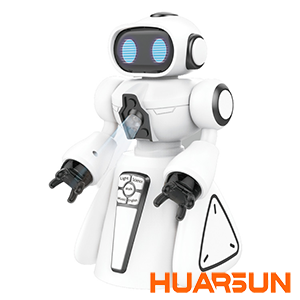1. From Instruments to Data Recording: The Screen Trend
In cold chain logistics, environmental monitoring, and portable industrial devices, data loggers (for temperature, humidity, gas, or pressure) are now everywhere. To let users view real-time values, alarm status, or recorded information, more devices are equipped with a built-in LCD display.
For industrial equipment, such as environmental testers, warehouse recorders, or vehicle dashboards, the display is not only a “status board” but also the interface of brand, interaction, and trust.

In this context, many manufacturers still choose a monochrome LCD display as the standard option. The reason is simple: low power consumption, cost-effectiveness, and clear readability make it the safest engineering choice. While TFT color displays or AMOLED modules are used in premium devices, monochrome LCD screens remain dominant in most industrial data loggers.
2. Real Advantages of Monochrome LCD
Monochrome LCD modules offer several natural benefits:
- Ultra-low power consumption – Perfect for long-term data loggers or portable devices that must run for days or even months.
- Cost control – The simple driver IC and material process make it more economical than TFT modules.
- High sunlight readability – Excellent outdoor visibility compared to color displays with heavy backlight dependence.
For example, if a device only needs to show temperature, humidity, max/min values, date, time, and alarm indicators, a 128×64 LCD module or 160×64 LCD screen is more than enough. In many industrial meters or E-bike style dashboards, this “just enough” feature becomes a strong advantage.
3. When to Consider TFT / AMOLED Displays
However, when higher user interaction, brand positioning, or visual differentiation is required, TFT LCD modules or AMOLED displays become the better choice.
Color screens enable:
- Animated user interface
- Graphs and charts
- Bluetooth/WiFi connection icons
- Navigation or menu systems
In Europe and North America, it is common to see 2.4-inch or 3.5-inch TFT displays integrated into high-end dashboards or industrial testers. Although color displays consume more power and have a more complex driver, they provide richer UX and brand experience. AMOLED further enhances contrast and vivid colors, ideal for premium industrial devices.

4. Procurement Risks & Selection Tips
Manufacturers often face common issues when sourcing LCD modules:
- Declared “in stock” but delayed shipment
- Interface mismatch (SPI, I²C, MCU, or parallel)
- No datasheet or drawing support, making integration difficult
- MOQ too high for small-batch testing
Recommendation: Always request samples for testing, confirm interface compatibility, and obtain complete technical files & driver support. Whenever possible, work directly with a factory direct LCD manufacturer that offers stock availability, OEM/ODM customization, and engineering support. This reduces both time-to-market and development risks.
5. Future Outlook: Display as a Core Interface
Looking forward, the display will evolve from an optional accessory to a must-have human-machine interface. With the progress of low-power TFT and mini AMOLED modules, more industrial devices will treat displays as a core design element.
Hybrid solutions may also emerge: combining monochrome segments with selective color zones, or integrating smart power-saving control.
For OEMs, leaving flexible space, interface options, and driver compatibility in early product design ensures smoother upgrades and market adaptability.
6. FAQ Section (SEO-Optimized)
Q1: Why is a monochrome LCD better for industrial data loggers?
Because a monochrome lcd display module uses much less power, remains stable in harsh environments, and is cost-effective compared to color screens.
Q2: Can the display work under extreme temperatures?
Yes. Standard working range is -20℃ to +70℃, with extended options available for industrial lcd screen modules.
Q3: Do you provide custom interfaces or resolutions?
Yes. We support SPI, I²C, parallel interface LCD modules, and resolutions from 128×64, 160×128, 240×128, up to 320×240 LCD displays.
Q4: What is the lead time for orders?
For in-stock monochrome lcd modules, shipment is available within 7 days. For OEM/ODM customization, typical lead time is 3–4 weeks.
7. Conclusion & Call to Action
Monochrome LCD displays remain the mainstream solution for industrial data loggers and environmental testing instruments, thanks to their low power, cost efficiency, and outdoor readability.

For higher-end applications, TFT and AMOLED are gaining popularity, but monochrome screens continue to dominate where long battery life, durability, and affordability matter most.
As a factory direct LCD manufacturer, we provide in-stock shipment, OEM/ODM service, and technical support. Contact us today to request a datasheet, samples, or bulk pricing for your next industrial display project.









 Home
Home HEM LCD
HEM LCD  Sep 28,2025
Sep 28,2025 
 TFT Display for AI Earbuds
TFT Display for AI Earbuds 
 Jun 07,2025
Jun 07,2025 





